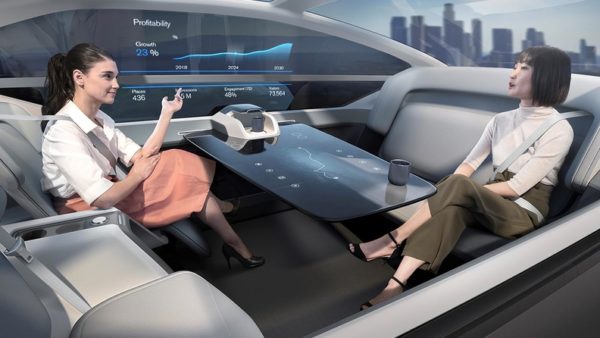Shared mobility could help reduce travel costs and overall environmental impact of passenger vehicles. A reported 23% of U.S. consumers use ridesharing at least once per week.38
To date, most ridesharing vehicles are repurposed personal vehicles, although the U.S Department of Transportation has also developed federal guidelines to help cities and municipalities add low-speed automated shuttles to their transportation fleets to help solve first- and last-mile travel issues for those who rely heavily on public transportation.
The growth of ridesharing and car-sharing services will continue to significantly influence individual mobility behavior while introducing changes to automotive systems—particularly vehicle interiors. Riders will continue to expect advancements such as durable, hygienic materials as well as accessible interiors, an enhanced in-transit experience, and innovative display materials. Shared mobility is also expected to reduce average vehicle lifespans due to increased usage rates, which could encourage the use of longer-lasting automotive materials that are more durable, recyclable, repairable, and replaceable. Advanced plastics and polymer composites could play a major role in the following areas:
Anti-Odor, Self-Cleaning, and Antimicrobial Materials
Design Impacts

Like mass transit seating, shared vehicle interiors will require durable, hygienic, and odor-free surfaces to accommodate multiple passenger trips.
Opportunities for Advanced Plastics and Polymer Composites
Contact-activated polymeric interiors can resist odors and microbial growth.39
Collaborative Activities
Hygienic Materials
| Near (2020–2022)Mid (2023–2025)Long (2026–2030) | |
|---|---|
| Demonstrate novel automotive interior prototypes that are specifically designed for easy cleaning and disinfecting of plastics and polymer composites | Mid |
| Identify compatible materials systems (i.e., additives) to enable plastics and polymer composites with desired functional properties for shared vehicle interiors (i.e., anti-odor/-static/-microbial, self-cleaning) | Mid |


